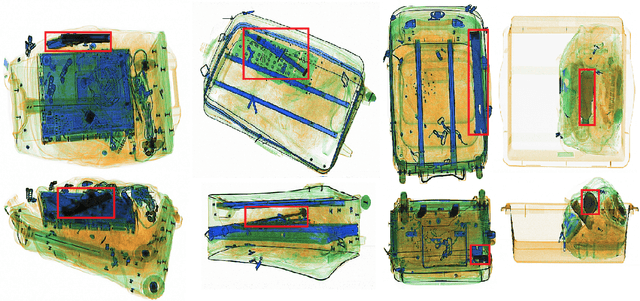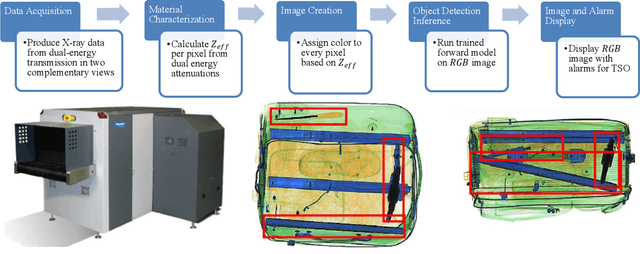Gregory P. Spell
Mixture Manifold Networks: A Computationally Efficient Baseline for Inverse Modeling
Nov 25, 2022Abstract:We propose and show the efficacy of a new method to address generic inverse problems. Inverse modeling is the task whereby one seeks to determine the control parameters of a natural system that produce a given set of observed measurements. Recent work has shown impressive results using deep learning, but we note that there is a trade-off between model performance and computational time. For some applications, the computational time at inference for the best performing inverse modeling method may be overly prohibitive to its use. We present a new method that leverages multiple manifolds as a mixture of backward (e.g., inverse) models in a forward-backward model architecture. These multiple backwards models all share a common forward model, and their training is mitigated by generating training examples from the forward model. The proposed method thus has two innovations: 1) the multiple Manifold Mixture Network (MMN) architecture, and 2) the training procedure involving augmenting backward model training data using the forward model. We demonstrate the advantages of our method by comparing to several baselines on four benchmark inverse problems, and we furthermore provide analysis to motivate its design.
Background Adaptive Faster R-CNN for Semi-Supervised Convolutional Object Detection of Threats in X-Ray Images
Oct 02, 2020Abstract:Recently, progress has been made in the supervised training of Convolutional Object Detectors (e.g. Faster R-CNN) for threat recognition in carry-on luggage using X-ray images. This is part of the Transportation Security Administration's (TSA's) mission to protect air travelers in the United States. While more training data with threats may reliably improve performance for this class of deep algorithm, it is expensive to stage in realistic contexts. By contrast, data from the real world can be collected quickly with minimal cost. In this paper, we present a semi-supervised approach for threat recognition which we call Background Adaptive Faster R-CNN. This approach is a training method for two-stage object detectors which uses Domain Adaptation methods from the field of deep learning. The data sources described earlier make two "domains": a hand-collected data domain of images with threats, and a real-world domain of images assumed without threats. Two domain discriminators, one for discriminating object proposals and one for image features, are adversarially trained to prevent encoding domain-specific information. Without this penalty a Convolutional Neural Network (CNN) can learn to identify domains based on superficial characteristics, and minimize a supervised loss function without improving its ability to recognize objects. For the hand-collected data, only object proposals and image features from backgrounds are used. The losses for these domain-adaptive discriminators are added to the Faster R-CNN losses of images from both domains. This can reduce threat detection false alarm rates by matching the statistics of extracted features from hand-collected backgrounds to real world data. Performance improvements are demonstrated on two independently-collected datasets of labeled threats.
Toward Automatic Threat Recognition for Airport X-ray Baggage Screening with Deep Convolutional Object Detection
Dec 13, 2019



Abstract:For the safety of the traveling public, the Transportation Security Administration (TSA) operates security checkpoints at airports in the United States, seeking to keep dangerous items off airplanes. At these checkpoints, the TSA employs a fleet of X-ray scanners, such as the Rapiscan 620DV, so Transportation Security Officers (TSOs) can inspect the contents of carry-on possessions. However, identifying and locating all potential threats can be a challenging task. As a result, the TSA has taken a recent interest in deep learning-based automated detection algorithms that can assist TSOs. In a collaboration funded by the TSA, we collected a sizable new dataset of X-ray scans with a diverse set of threats in a wide array of contexts, trained several deep convolutional object detection models, and integrated such models into the Rapiscan 620DV, resulting in functional prototypes capable of operating in real time. We show performance of our models on held-out evaluation sets, analyze several design parameters, and demonstrate the potential of such systems for automated detection of threats that can be found in airports.
 Add to Chrome
Add to Chrome Add to Firefox
Add to Firefox Add to Edge
Add to Edge